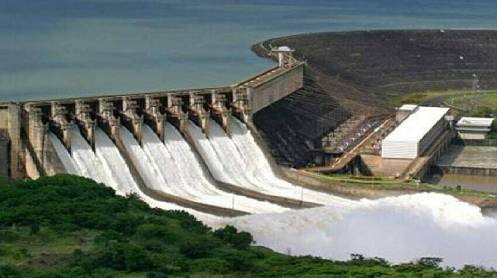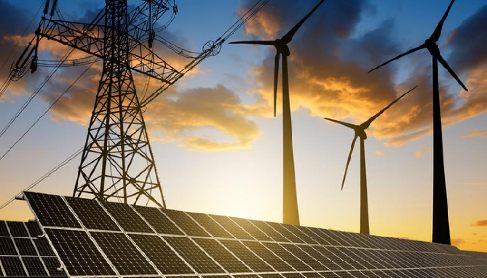- Government needs to divert financial resources for development of water reservoirs, in addition to existing projects
ISLAMABAD: Pakistan’s water woes are unlikely to be over even after construction of Diamer Bhasha Dam (DBD) in 2030 as till that time water requirements of agriculture would have increased further due to traditional ways of farming.
Background interviews with the water sector experts and officials suggest that the government needs to divert financial resources for development of water reservoirs, in addition to existing projects.
Information gathered by Business Recorder revealed that the government authorized 35 per cent of funds out of the total allocation of Rs 90 billion in Public Sector Development Program (PSDP) 2023-24 during the first two quarters of the current year which has already been released except for a couple of projects which require time extension.
Diamer Bhasha Dam: Wapda all set to divert waters from River Indus by Nov
However, out of total allocation Rs 110 billion for hydropower sector, Rs 20 billion of Foreign Exchange Component (FEC) has not materialized due to non-availability of Rupee cover by the Government of Pakistan.
According to Economic Affairs Division, major hydropower and transmission line projects are reportedly facing rupee cover issues due to less allocation in the PSDP 2023-24.
EAD has requested Finance Division to make arrangements for rupee cover of the projects so that donors’ commitments may materialize.
The International Monetary Fund (IMF) has made Rupee cover mandatory for utilization of foreign aid for any project, which has become a hurdle – the first time when this condition is being strictly applied.
Water issue is like a slow poison which is worsening gradually and if not rectified on a timely basis, it will create serious issue for the country. Presently, 135 MAF surface water is available in the country, of which 102 MAF is used for agriculture purposes. The remaining surface water goes into seepage or into the sea. Of 102 MAF water, 94 per cent water is used for agriculture.
Pakistan needs to bring down this percentage’; China slashed it to 60 per cent from over 90 per cent. This can be done through efficient irrigation by provinces, which have not done any work on it. World Bank has extended loan to concrete canal deliveries but on ground nothing has happened, said one of the water experts.
However, activity on development of command areas is in progress but it is still unsatisfactory.
Presently, 450 million acres of land is being supplied canal water, which always faces about 25 per cent shortage on average. Pakistan needs 15 or 16 MAF new reservoirs to eliminate this shortage but it is constructing DBD of 6.4 MAF which will be available in 2029 or 2030 despite the fact that the demand would have risen by then to 14 or 15 MAF. There is also the possibility that current average shortage of 25 per cent reaches 35 per cent, which implies that addition of 6.5 MAF reservoir of DBD would bring the shortage back to 25 or 26 per cent.
“We are working on water reservoirs but the speed which required for this task is not being adopted as we neither constructed water reservoirs during the last 40 years nor improved water using methods,” said an official.
Pakistan is now facing challenges due to its indolent attitude with respect to development of water reservoirs, he continued.
Water sector experts argue that the government should allocate some portion of Benazir Income Support Fund (BISP) to expedite development of hydropower and water projects which would increase water availability for the agriculture sector and provide cheap electricity.
The government is approaching Arab Consortium, i.e. Saudi Fund, Kuwait Fund, OPEC Fund and Islamic Development Bank for financial support of DBD. They had extended funding for Mohmand Dam with other options like securitization of Ghazi Barotha dam to fund DBD being explored.
“Islamic Development Bank, SFD and ADB have been approached to seek support for bridging financing gap of $ 3.5 billion for DBP. MDBs have not yet shown any willingness as an anchor financier, “said official sources.
Recently SIFC was informed that new bankable financing structure of DBD for availing foreign investment has been prepared by HBL/EY. It should be pitched to potential investors for attracting investment.
The SIFC has directed Planning Ministry to ensure disbursements for water projects committed in National Water Policy (10 per cent of PSDP/ ADP including provision of additional funds for water sector during CFY after mid-year review).
“If Wapda has to avail funding, one way is that GoP should extend sovereign guarantee, which is now almost impossible. The second way is that Wapda launches a bond on the basis of its balance, which is also not possible due to its receivables of Rs 214 billion from power sector which is part of the circular debt,” the sources added.
The lenders will certainly evaluate Wapda’s payback capacity before making any commitment as circular debt makes it difficult to arrange funds.
The government has considered seeking funding from friendly countries through securitization of running projects like Ghazi Barotha dam to assess the pulse of lenders; or seek a loan like the balance sheet option.
However, the lender will check if sufficient returns are ensured in the offer or not.
Chairman Wapda recently sought permission to raise hydel tariff by Rs 3 per unit to seek funding from friendly countries as at tariff of Rs 3.50 per unit, only $ 80 or $ 90 million funding will be available. For $ 3.5 billion funding hydel tariff needs to be increased to Rs 20 per unit and if $ 500 million financing is required tariff has to be raised to Rs 10 per unit.
Pakistan has been consistently ranked amongst the top ten most vulnerable countries to climate change, mostly because of the impact on the Indus system. More than 80% of Pakistan’s arable land is irrigated by the waters of the Indus.
Nine out of the ten largest cities in Pakistan are situated within 50km or less of the waters of the Indus. The degradation of the Indus Basin presents a precarious economic, social, ecological as well as demographic challenge to Pakistan as a developing country.
Pakistan is at risk of extreme weather variations and unexpected occurrences. The gradual increase in air and soil temperature will cause water scarcity, while recurring heat-waves will intensify the situation and worsen droughts.





